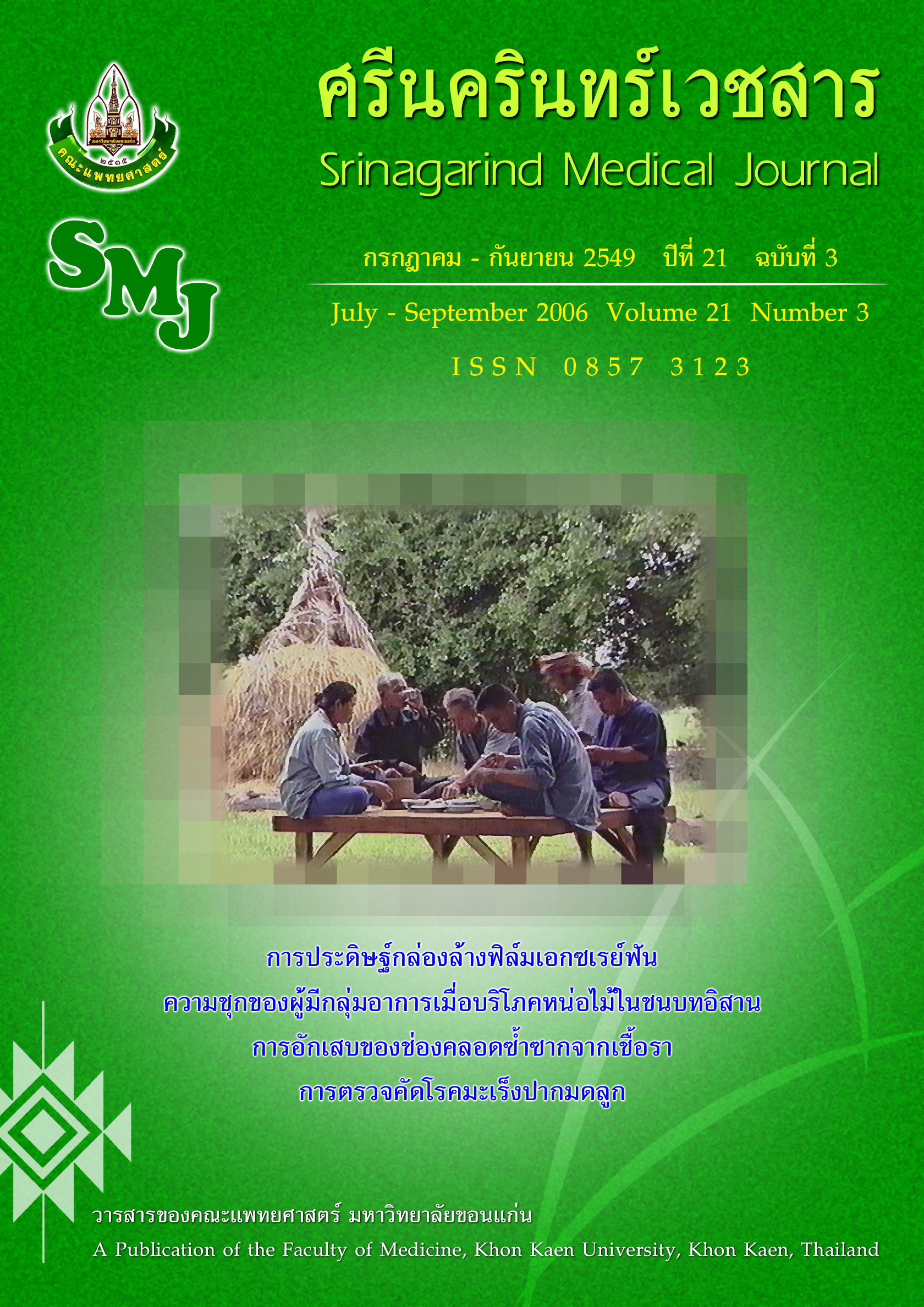Assessment of quantitative proteinuria by using the protein-creatinine ratio in random single urine sample in children
Abstract
Background : Measurement of proteinuria can be evaluated by many ways. The gold standard method is 24 hours urine collection for protein, but it is time consuming and requires multiple steps for a valid sample. So that the purpose of this study is to evaluate whether the protein to creatinine ratio in the spot morning urine sample is a reliable indicator of 24 hrs urine excretion and to evaluate cut off level for separate nephrotic and non-nephrotic range proteinuria, because of previous studies can not be concluded the absolute cut off point. Each institute should be set its standard point because of different tools and collection procedures.
Method : Descriptive diagnostic test in 83 children (45 nephrotic range proteinuria and 38 non-nephrotic range proteinuria) , age group 2-15 years old who were admited at Srinagarind hospital between 1st January, 2003 to 31st December,2003. Urine was collected by 24 hours urine start in the morning and spot morning urine was collected at 8.00 a.m. for evaluation of protein and creatinine. The blood samples were collected by venous puncture and evaluated for cholesterol, albumin, BUN and creatinine. Then the data was analysed by diagnostic test and plotted on ROC curve.
Result : The result of the study revealed that protein to creatinine ratio in single random urine was significantly correlated with 24 hour urinary protein value. The best cut off level is 2.0 yields a sensitivity of 82.2% (95% CI 0.71-0.93) and a specificity of 71.1% (95% CI 0.57-0.83)
Conclusion : Protein to creatinine ratio in a single random urine in children is a clinically useful screening test to differentiate nephrotic range proteinuria from non-nephrotic range proteinuria by using the cut off point of 2.0 . For higher sensitivity and specificity, there should be further studies with larger sample size.




